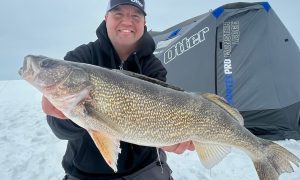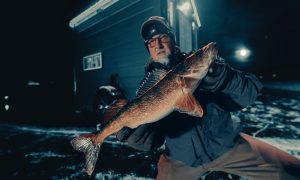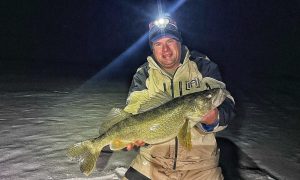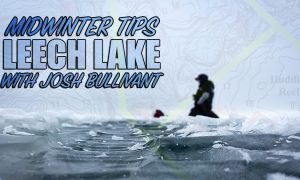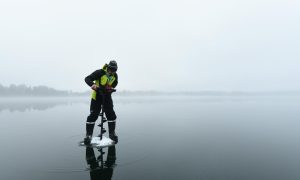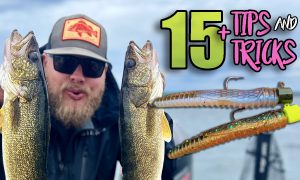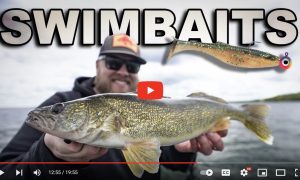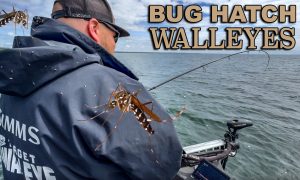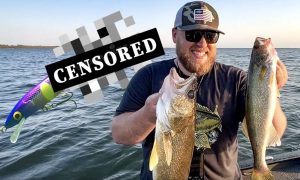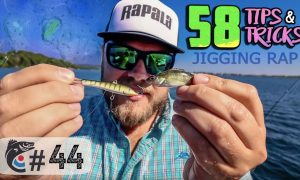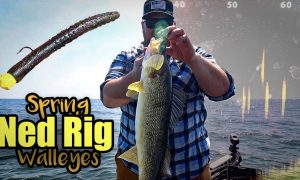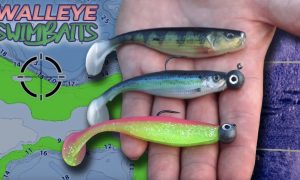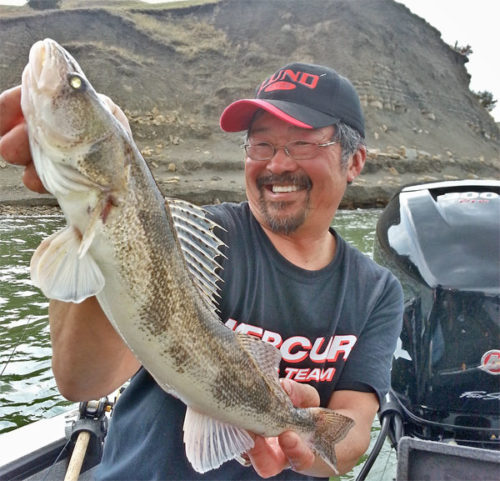 Walleyes and saugers behave in similar ways. Understanding how these fish adapt to living in rivers is the key to pinpointing location. Both species gather behind any natural or manmade current break that offers place to rest, to ambush food or both.
Walleyes and saugers behave in similar ways. Understanding how these fish adapt to living in rivers is the key to pinpointing location. Both species gather behind any natural or manmade current break that offers place to rest, to ambush food or both.
Movements across long straight river stretches are followed by rest stops at river bends where water slows on the inside turns. A good river map will pinpoint those spots quickly. Look for gravel, rock, sand, clay and even clam beds. If the current or barge traffic has cut a hole in the bottom nearby where fish can rest or ambush minnows, that’s even better. Rushing water creates rolling washboard bottoms in soft sand and mud.
What you’re looking for are eddies, which are areas of slack water created by current breaks:
> They can occur on both the upstream and downstream sides of points.
> They can be upstream and downstream from neckdowns where the two shorelines pinch together.
> Current also slows on the upstream and downstream sides of islands. Eddies form on either side of wing dams.
> Eddies form when current from a tributary or a feeder creek or factory discharge meets the faster moving water of the main river.
No matter what forms an eddy, the critical place to note is the seam where faster moving water meets the slower water. Fish can hold just inside the slower water on one side of the seam and ambush food as it moves by.
Wingdams
Wingdams are critical structures on the Mississippi. The rocks stacked perpendicular from the shoreline running toward the channel help direct current away from the bank to slow erosion. The water rolls as it hits the face of the wingdam. Water speed slows at the base. Walleyes and saugers will tuck in where they can wait for food.
Wingdams on river bends are usually best. Where there are three wingdams or more are positioned in a row, target the first one upstream and the last one downstream first. If those two don’t hold fish move on.
Use a Humminbird Side Imaging to show important features on wingdams that can hold fish, including trees, or a hole that has opened in the face.
Precise reading of good sonar can also pinpoint transition areas between hard and soft bottom where fish gather because of the wider variety of food available at spots like those.
High water? Move toward the shore. Low water? Look for places that still have current. Move out toward the channel, move up toward a dam or downstream from neckdowns.
Tactics
Jigs, rigs, trolling crankbaits on leadcore – are all tactics which work great for catching walleyes and saugers in rivers.
A key tactic is trolling with three-way rigs. You can slide upstream slower (than slip jigging downstream) and you can move through a little eddy, along a current break and have a bait in their faces longer.
Slow-troll against the current at about the speed of a slow walk on shore. Try putting enough weight on your three-way so that you can stay on the bottom with about a 45-degree angle between line and water’s surface. The dropper should be about 8-10″ long with a 4′ leader to a floating shallow-running crankbait, or a single hook, or a floating jig head.
Trolling upstream with the gasoline kicker and a double crankbait setup will sometimes outfish three-ways. A 3- to 5-oz bell sinker is attached to the dropper. A 3-5′ leader goes to a crankbait clip for the first floating lure. A 1′ leader is then tied to the rear split ring of the front lure and leads to a crankbait clip for the second lure. Use shallow-running short-billed crankbaits. Mix up colors. Clips make changing lures easy
Three-way rigs are also great for fishing the front side of wingdams. Simply position the boat upstream, let the rigs go back to the face of the dam and slide the boat from side to side to check out different parts of the dam. High water, try inside closer to shore. Low water, try nearer the tip where there’s some current.
Try trolling with leadcore line when the river is at normal pool or lower and when debris in the water is scarce. Use medium-action rods and spool 18-lb leadcore on large line-counter reels that enable baits to be returned to the effective depth. Try different depths until a fish is caught. Troll with different types of deep-diving crankbaits.
Jigs are an old river standby for good reason – they work. To slip downstream with the current, choose a jig heavy enough to maintain bottom contact and keep the line straight below the boat while it moves with the current. Braided line (I use TUF Line XP) increases sensitivity to feel strikes and improves hooksets.

